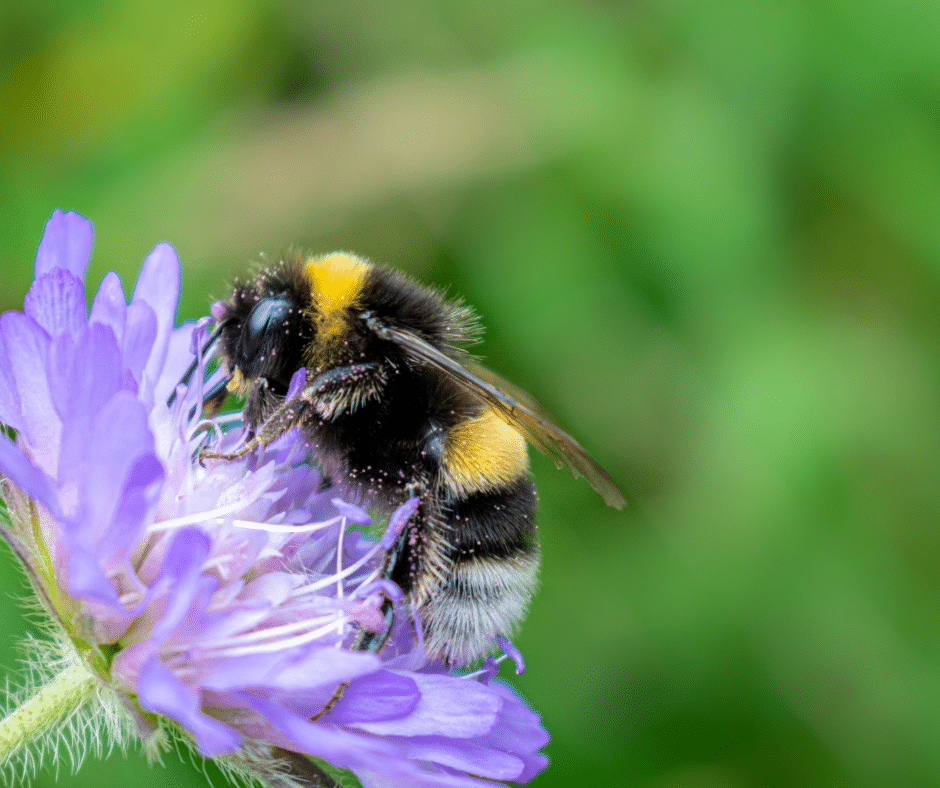Pollination is an essential process that occurs when pollen is transferred from the male part of a flower to the female part, resulting in fertilization and the production of seeds. This process is crucial for the survival of many plants, as well as for the animals and insects that rely on them for food and shelter. Bees and other pollinators play a vital role in this process, and their work helps keep our world thriving.

Bees are the most well-known pollinators, and they are responsible for pollinating many of the fruits and vegetables that we eat, such as apples, blueberries, and almonds. In fact, it’s estimated that one-third of the food that we consume each day is dependent on pollinators. Bees are particularly effective pollinators because they have specialized hairs on their bodies that allow them to collect pollen as they move from flower to flower. They also have a special gland that produces a sticky substance called “bee glue,” which helps them to carry pollen from one flower to another.
Other pollinators include butterflies, moths, hummingbirds, and bats. These creatures are attracted to flowers because of their bright colors and sweet nectar, which provides them with the energy they need to fly and survive. As they feed on the nectar, they inadvertently collect pollen on their bodies, which they then transfer to other flowers as they continue to search for food.
The intricate dance of pollination is a complex process that involves many factors, including the timing and frequency of flower blooms, the size and shape of the flowers, and the behavior and habitat of the pollinators. For example, some flowers are only open during certain times of the day, while others are only receptive to certain types of pollinators. Some flowers have a specific shape that only certain pollinators can access, such as the long, narrow tube of a honeysuckle flower, which is perfect for the long tongue of a hummingbird.
Pollinators are also sensitive to changes in their environment, and their populations are threatened by habitat loss, pesticide use, and climate change. For example, the decline in honeybee populations over the last decade has been attributed to a phenomenon known as colony collapse disorder, which is caused by a combination of factors, including habitat loss, pesticide exposure, and disease.
The loss of pollinators could have serious consequences for our food supply and the ecosystem as a whole. Without pollinators, many plants would not be able to produce seeds and reproduce, leading to a decline in their populations. This could have a cascading effect on other animals and insects that rely on those plants for food and shelter, leading to a loss of biodiversity and a decline in the health of the ecosystem.
Fortunately, there are steps that we can take to protect and support pollinators. One of the most important things that we can do is to provide habitat and food sources for pollinators, such as by planting native flowers and shrubs in our gardens and yards. We can also reduce our use of pesticides and herbicides, which can be harmful to pollinators and other beneficial insects.

Another way to support pollinators is to support local beekeepers and farmers who use sustainable and organic practices that promote healthy ecosystems. By choosing to buy organic and locally grown food, we can help reduce the use of pesticides and support the health of pollinators and the environment.
In conclusion, the intricate dance of pollination is a fascinating and essential process that keeps our world thriving. Bees and other pollinators play a vital role in this process, and their work helps to ensure the production of many of the foods that we eat.
